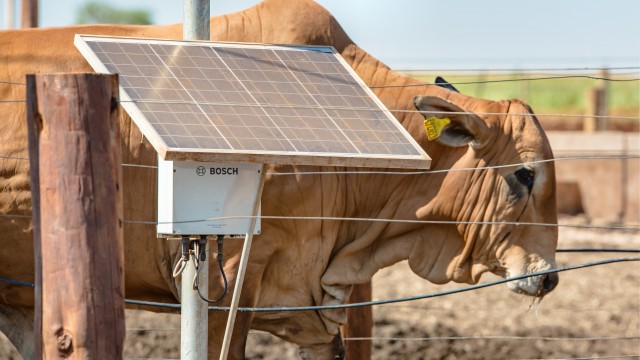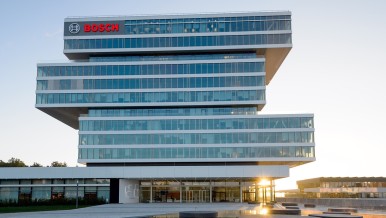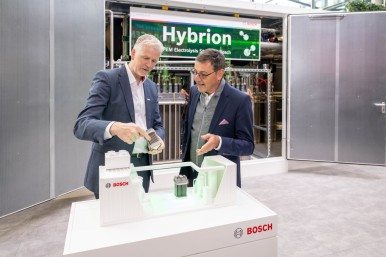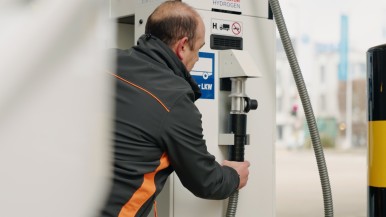Brasilia: Red dust blows across the broad and sweltering steppe, and there’s a strong smell in the air. Forty thousand head of cattle can’t help but give off a certain odor. These ones have no idea that they’re pioneering the future of livestock farming. Thankfully for those sensitive to smell, Fazenda Santa Fé, one of Brazil’s largest cattle farms, is situated far off in the Brazilian state of Goiás, some 400 kilometers southwest of the capital, Brasília. Despite its remote location, this farm could be key to shaping the future of agriculture — even far beyond Brazil. That’s because the Bosch Precision Livestock Farming system is being used here for the first time. Gustavo Ferro, wearing a light-colored shirt, jeans, and ostrich leather cowboy boots, explains what this entails. “It takes a lot of time to weigh that many cattle. However, it’s decisive to the economic success of a farm to frequently check the animals’ weight, and to be as precise as possible in doing so. And we now offer a solution that does precisely that.” Ferro has been working on the project since spring of 2014 – it now involves around 20 associates, including veterinarians, agronomists, and, of course, engineers from a variety of areas.
About Bosch
The Bosch Group is a leading global supplier of technology and services. It employs roughly 417,900 associates worldwide (as of December 31, 2024). According to preliminary figures, the company generated sales of 90.5 billion euros in 2024. Its operations are divided into four business sectors: Mobility, Industrial Technology, Consumer Goods, and Energy and Building Technology. With its business activities, the company aims to use technology to help shape universal trends such as automation, electrification, digitalization, connectivity, and an orientation to sustainability. In this context, Bosch’s broad diversification across regions and industries strengthens its innovativeness and robustness. Bosch uses its proven expertise in sensor technology, software, and services to offer customers cross-domain solutions from a single source. It also applies its expertise in connectivity and artificial intelligence in order to develop and manufacture user-friendly, sustainable products. With technology that is “Invented for life,” Bosch wants to help improve quality of life and conserve natural resources. The Bosch Group comprises Robert Bosch GmbH and its roughly 470 subsidiary and regional companies in over 60 countries. Including sales and service partners, Bosch’s global manufacturing, engineering, and sales network covers nearly every country in the world. Bosch’s innovative strength is key to the company’s further development. At 136 locations across the globe, Bosch employs some 86,900 associates in research and development, of which nearly 48,000 are software engineers.
The company was set up in Stuttgart in 1886 by Robert Bosch (1861–1942) as “Workshop for Precision Mechanics and Electrical Engineering.” The special ownership structure of Robert Bosch GmbH guarantees the entrepreneurial freedom of the Bosch Group, making it possible for the company to plan over the long term and to undertake significant upfront investments in the safeguarding of its future. Ninety-four percent of the share capital of Robert Bosch GmbH is held by Robert Bosch Stiftung GmbH, a charitable foundation. The remaining shares are held by Robert Bosch GmbH and by a corporation owned by the Bosch family. The majority of voting rights are held by Robert Bosch Industrietreuhand KG. It is entrusted with the task of safeguarding the company’s long-term existence and in particular its financial independence – in line with the mission handed down in the will of the company’s founder, Robert Bosch.
Additional information is available online at www.bosch.com, www.iot.bosch.com, www.bosch-press.com.






